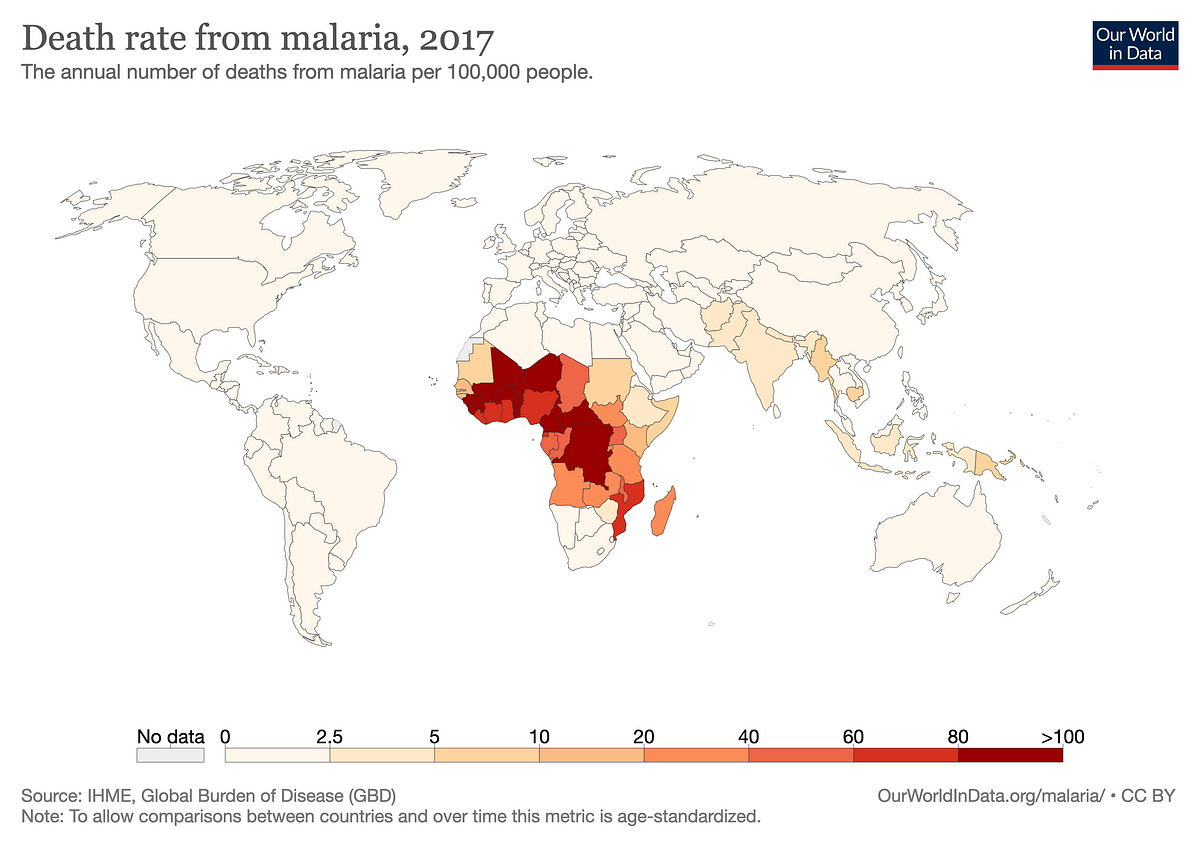Written by Francesco Palma and Isaac Rosat
In this article, we will first describe how malaria works and how to diagnose this disease, as well as the problems inherent to it. Then we will talk about the ML model used to detect malaria with the help of blood samples and the results of its performance.
Malaria is one of the deadliest parasite-related diseases humankind has ever known. It has been around ever since humans have been on the face of the earth and it is certainly here for the long term.
In 2018, 228 million were infected and 405’000 people died, making it a significant health concern and problem.
Africa is home to 94% of all malaria cases (2018), but it is also prevalent in southern China and present on nearly all continents.
As malaria mainly hits African countries, it is even harder to contain and effectively fight this parasite. Indeed, the developing countries in which it prospers do not always have the appropriate resources to reduce their vulnerability to malaria.
There are an estimated 12 billion US Dollars lost by malaria-hit countries per year, due to the inability of many citizens to work during big malaria outbreaks, high healthcare costs and adverse effects on tourism. Add to the pot around 2.7 billion Dollars of humanitarian aid and there is no doubt that malaria has a tremendous negative impact on the economy of affected countries.
Malaria, what is it?
Malaria is actually only the name given to the disease. It is caused by a unicellular protozoan parasite known by its genus name, Plasmodium.
Plasmodium comprises a wide variety of parasites, around 200, but only a handful can contaminate humans. As they are parasites, they use several hosts to feed and reproduce.
5 species of plasmodium parasites can successfully parasite humans and be harmful to them,_ P. flaciparum, P. vivax, P. ovale, P.malariae, _and _P.knowlesi _(P. stands for Plasmodium). While all of the 5 species cited can cause malaria, it is _p.flaciparum _that is usually lethal and causes severe malaria.
#artificial-intelligence #malaria #image-classification #no-code #machine-learning #deep learning
